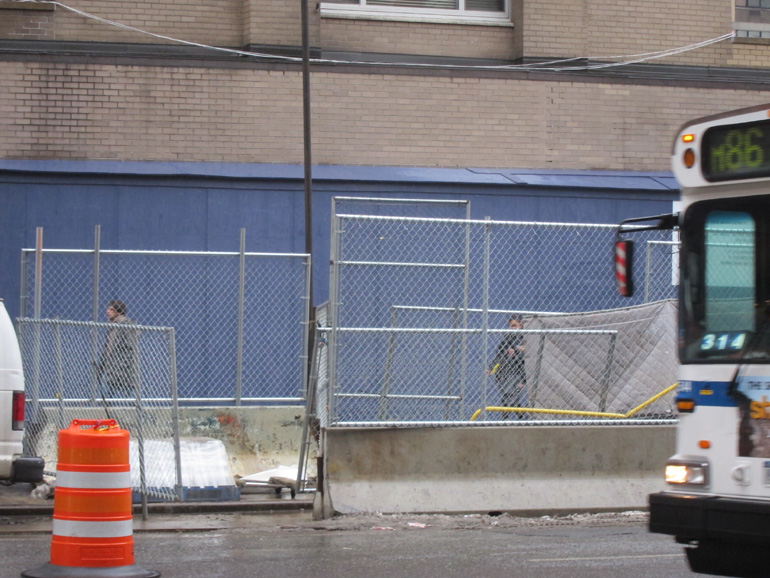Gotham Diary:
Procedural
25 January 2012
One of the craziest things about law school — in my day, anyway — was the presence of Criminal Procedure in the first-year curriculum. I had a terrible time with the class because I could not suppress the conviction that we were not being taught things in the proper order. Criminal Procedure is, basically, Constitutional Criminal Law, meaning the body of procedural requirements ordained by interpretations of the Bill of Rights and its piecemeal superimposition upon state law. Law schools are not interested in the array of federal criminal laws, such as the Mann Act or Rule 10b-5. They’re even less interested in the states’ various criminal laws. But what’s worse about learning criminal procedure in the first year of law school is the postponement of learning about evidence to the second year. Criminal Procedure ostensibly lays out the rules for playing the Go To Trial game fairly. It’s only in Evidence that you learn how bizarre, deranged, and no-longer-just that game really is.
I was thinking about all of this yesterday as I read Adam Gopnik’s Critic At Large piece in this week’s New Yorker, “The Caging of America.” Nobody who reads The New Yorker needs to be told that we have a massive prison problem, with a far higher percentage of men behind bars than any other advanced nation; or that this prison problem is also, outrageously, a race problem, with a sickening disproportion of black and Latino inmates. Adam Gopnik brings two new items to his discussion. Well, one of them was new to me, William J Stuntz’s The Collapse of American Criminal Justice, published last year right before the Harvard professor’s death. If I heard mention of the new title, nobody went on to tell me that Stuntz came to the conclusion that it’s our Bill of Rights itself that’s the root of the prison problem. “The trouble with the Bill of Rights, he argues, is that it emphasizes process and procedure rather than principles.”
This emphasis, Stunts thinks, has led to the current mess, where accused criminals get laboriously articulated protection against procedural errors and no protection at all against outrageous and obvious violations of simple justice. You can get off if the cops looked in the wrong car with the wrong warrant when they found your joint, but you have no recourse if owning the joint gets you locked up for life. You may be spared the death penalty if you show a problem with your appointed defender, but it is much harder if there is merely enormous accumulated evidence that you weren’t guilty in the first place.
This is just another typical, sad result of Anglophone credulousness when it comes to playing fair. The problem with trying to play fair in a criminal trial is that it’s absolutely unnatural. We may say that everybody is innocent until proven guilty, but we don’t back it up at all with safeguards against our bone-deep doubt that a truly innocent person would ever wind up in the dock. We’re unwilling to understand that many good police officers, seasoned by experience, will outgrow the essentially adolescent modality of playing fair and turn toward seeking justice instead, procedures be damned. And we tacitly conspire, all of us, to impose the brunt of our sillier laws — Gopnik rightly singles out our marijuana-possession proscriptions — on minorities, permitting white infractors to get off lightly, thus baffling the point that the law itself makes little sense.
I said that we don’t back up our innocent-until-proven-guilty rule with “safeguards,” but this is not true; it’s worse than untrue, because the safeguards provided by our laws of evidence  were put in place by an entirely different society, a largely homogeneous one with low social mobility. It’s worth bearing in mind that the original Anglophone witnesses, back in the Middle Ages, were also the jury. Imagine rules for an emergency-health-care system that took no account of ambulences or cell phones. That’s what our jury system is like. It made sense, about a thousand years ago. What the laws of evidence serve to do today is to block a lot of common sense. And they encourage the judge and opposing counsel to engage in all manner of fancy branles and bourrées over what is and what isn’t “admissible,” not to mention the surreal demand that jurors will pretend not to have heard this or that in the courtroom. Â
The other thing that felt fresh about Gopnik’s essay was the note on which he ended it: “‘Merely chipping away at the problem by the edges’ is often the very best thing to do with a problem; keeping chipping away patiently and, eventually, you get to its heart.” This is a kind of conservative optimism, it’s true; it’s dangeously close to believing that “muddling through” will get you through any crisis. But there was nothing muddling about the changes that brought crime rates to a national low in New York City — “just the intercession of a thousand smaller sanities.” Not enough of these sanities were located within the criminal justice system itself, however.
Elsewhere in the issue, Ryan Lizza points out that, thanks to the vast increase in self-segregation in American society since the passage of the Civil Rights Acts, the divide between red and blue is not a bad dream but a political reality. Maybe it’s time for progressive thinkers to explore ways to exploit the divide. The denizens of securely-gated communities have very little reason to fear drug-addled “elements” from the wrong side of town. Why not encourage them to take the “live-and-let-live” that their seclusion, once available only to the very wealthy, now allows them?

